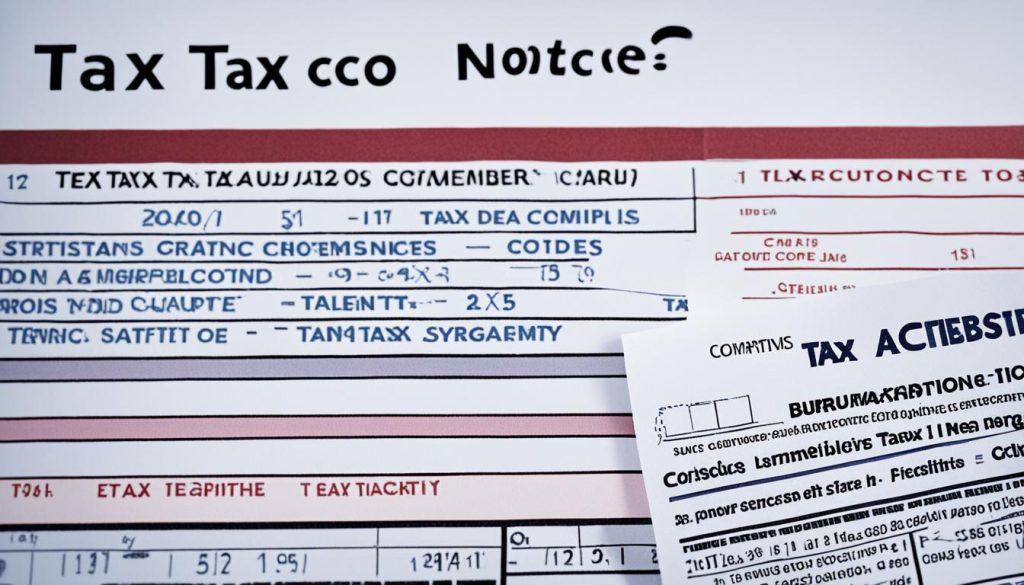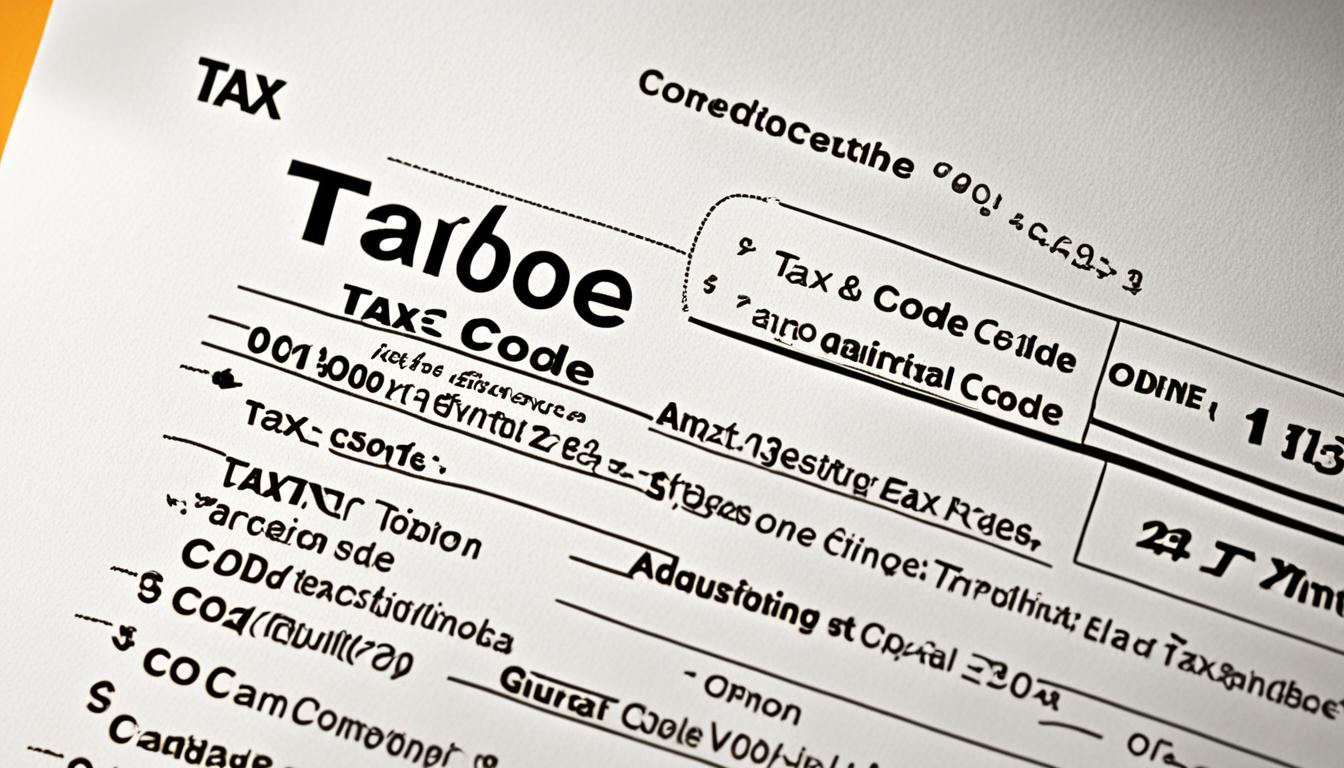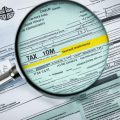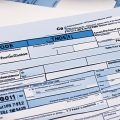Last Updated on: 8th April 2024, 05:04 am
A tax code is a combination of numbers and letters given to individuals to show HMRC how much Income Tax and National Insurance they should be paying. In the UK, the 1250L tax code is the most common tax code used. In this complete guide, we will explore the significance of the 1250L tax code, the tax-free allowance it represents, the understanding of tax codes, the use of tax code calculators, and the recent tax code changes made by HMRC.
The 1250L tax code consists of two parts: “1250” and “L.” The “1250” indicates the tax-free income an employee is entitled to in a tax year, which is currently £12,570 for the 2021/22 tax year. This amount is commonly referred to as the tax-free allowance. Any income earned above this threshold is subject to taxation. The “L” represents the standard Personal Allowance, which is the same as the tax-free allowance.
Understanding tax codes is essential to ensure you are paying the correct amount of tax and to avoid overpaying or underpaying. By familiarizing yourself with the 1250L tax code and its meaning, you can better navigate your tax obligations and make informed financial decisions.
To accurately calculate your tax liability, you can use tax code calculators provided by HMRC or reputable resources like MoneySavingExpert’s tax code calculator. These tools take into account various factors such as personal allowances, income from multiple jobs, taxable benefits, and any outstanding tax owed from previous years.
It is important to note that tax codes can change from year to year, and HMRC regularly updates them to reflect changes in tax regulations. Staying informed about tax code changes ensures that you are aware of any adjustments that may affect your tax liability.
By gaining a thorough understanding of the 1250L tax code and other related tax codes, you can effectively manage your tax obligations and take advantage of available tax reliefs and benefits. This knowledge empowers you to make informed financial decisions and potentially unlock opportunities for tax rebates or savings.
Who Receives a Tax Code?
When it comes to taxes in the UK, understanding your tax code is essential. But who exactly receives a tax code? Let’s take a closer look.
Anyone who is employed or paid through PAYE (Pay As You Earn) will receive a tax code. PAYE is the system through which employers deduct Income Tax and National Insurance contributions from their employees’ salaries.
Sole traders, on the other hand, do not have a tax code as they do not pay themselves through PAYE. Instead, they are responsible for calculating and managing their own tax obligations.
The tax code you receive will be provided by your employer through HMRC (Her Majesty’s Revenue and Customs) and will be indicated on your payslip.
What Is 1250L Tax Code?
Your tax code is not set in stone and can be adjusted based on various factors. These adjustments ensure that your tax obligations accurately reflect your individual circumstances.
One common tax code is the personal tax code 1250L, which represents the standard Personal Allowance. The Personal Allowance is the amount of income you can earn tax-free in a tax year. For the 2021/22 tax year, the Personal Allowance is £12,570.
Understanding Tax Code Adjustments
However, your tax code may need to be adjusted if you have income from other jobs, receive taxable benefits, or have any outstanding tax owed from previous years. These adjustments ensure that you are not underpaying or overpaying your taxes.
It’s important to review your tax code regularly and notify HMRC if you believe any adjustments are necessary. By doing so, you can ensure that your tax code accurately reflects your financial situation and avoid any potential issues with underpayment or overpayment of taxes.
Next, let’s take a closer look at how tax codes are determined and what each letter in a tax code represents.
| Tax Code | Meaning |
|---|---|
| 1250L | Standard tax-free Personal Allowance of £12,570 for the 2021/22 tax year. |
| 1257L | Increased tax-free Personal Allowance of £12,570 for the 2022/23 tax year. |
| 1256L or 1283L | Deviation from the standard Personal Allowance due to granted tax reliefs for job-related expenses. |
How is a Tax Code Determined?
When it comes to determining your tax code in the UK, several factors come into play. It all starts with the tax coding notice issued annually by HMRC. This notice explains the tax code assigned to you based on various considerations. If for some reason you don’t receive a tax code notice, you can still find out your tax code by using the tax code calculator available on the government website. Another option is to consult reliable resources like MoneySavingExpert’s tax code calculator, especially if you are an employed individual.
So, what factors influence your tax code? Let’s take a closer look. First, your personal allowance plays a crucial role. This is the amount of income you can earn tax-free in a given tax year. Other significant factors include income from other jobs and any taxable benefits you may be receiving. Additionally, any outstanding tax owed from previous years is taken into account.
It is important to note that if you believe your tax code is incorrect or needs adjustment, you should contact HMRC directly. They will be able to guide you through the process of discussing the issue and requesting an amended tax code that accurately reflects your circumstances.
Tax Code Determination Factors
- Personal allowance
- Income from other jobs
- Taxable benefits
- Tax owed from previous years

Having a clear understanding of how your tax code is determined is essential to ensure you are paying the correct amount of tax. By staying informed and taking the necessary steps to communicate any discrepancies to HMRC, you can avoid potential issues such as overpaying or underpaying tax.
Common UK Tax Codes
Understanding the different tax codes used in the UK is essential for individuals to navigate their tax obligations. Here are the most common tax codes and what they mean:
1. Tax Code 1250L
Tax code 1250L is the most common tax code in the UK in the 2021/22 tax year. This tax code indicates that an individual is entitled to the standard Personal Allowance of £12,570. Any income earned above this threshold is subject to taxation.
2. Tax Code 1257L
In the 2022/23 tax year, tax code 1257L has become the most common tax code. This update reflects the increased Personal Allowance amount of £12,570. Individuals with this tax code can enjoy a higher tax-free income threshold.
3. Tax Code 1256L and Tax Code 1283L
Other common tax codes, such as 1256L or 1283L, may deviate from the standard Personal Allowance due to granted tax relief for job-related expenses. These tax reliefs help individuals reduce their taxable income, potentially resulting in a lower tax liability.
It is important to note that while tax reliefs can reduce taxable income, they may not fully cover the actual expenses incurred. If there is a discrepancy, individuals may be entitled to a tax rebate to claim back any excess tax paid.
Understanding these common tax codes allows individuals to ensure that their tax deductions and allowances are accurately reflected, avoiding any potential overpayment or underpayment of taxes.
| Tax Code | Meaning |
|---|---|
| 1250L | Standard tax code for the 2021/22 tax year, indicating a £12,570 tax-free income threshold. |
| 1257L | Updated tax code for the 2022/23 tax year, reflecting the increased Personal Allowance of £12,570. |
| 1256L | Tax code with granted tax relief for job-related expenses, potentially lowering tax liability. |
| 1283L | Tax code with granted tax relief for job-related expenses, potentially lowering tax liability. |
Understanding the different tax codes and the associated tax reliefs enables individuals to make informed decisions about their finances and ensure compliance with HMRC regulations.

What Do the Letters in a Tax Code Mean?
The letters in a tax code represent different circumstances and allowances. Understanding these letters is essential to decipher how your income is being taxed and to determine any special circumstances affecting your tax situation.
1. K Tax Code
The K tax code is used when an employee owes deductions to HMRC from previous years that are greater than their Personal Allowance. This means that their entire income is used to repay the outstanding tax debt.
2. L Tax Code
The L tax code is the most common tax code in the UK and indicates qualification for the standard tax-free Personal Allowance. It means that you can earn a certain amount of income (currently £12,570 for the 2021/22 tax year) before you start paying income tax.
3. M Tax Code
The M tax code is used when an individual wants to transfer up to 10% of their partner’s Personal Allowance to themselves. This can be beneficial for couples where one partner earns less or doesn’t use their full Personal Allowance.
4. N Tax Code
The N tax code is used when an individual wants to transfer up to 10% of their own Personal Allowance to their spouse or civil partner. This can be advantageous if one partner has a higher income and wants to reduce their tax liability.
5. S Tax Code
The S tax code is used for individuals who are eligible for the Scottish rate of Income Tax. This means that their income is subject to the rates and thresholds set by the Scottish Government, which may differ from those in the rest of the UK.
6. C Tax Code
The C tax code is used for individuals who are eligible for the Welsh rate of Income Tax. This means that their income is subject to the rates and thresholds set by the Welsh Government, which may differ from those in the rest of the UK.
7. Y Tax Code
The Y tax code is used for individuals born before 6th April 1938 and are therefore entitled to a higher Personal Allowance. This allows them to earn more income before they start paying income tax.
8. T Tax Code
The T tax code is used when the calculation of the Personal Allowance involves other factors, such as income from other jobs or taxable benefits. This is often the case for individuals with complex income sources.
9. BR Tax Code
The BR tax code is used when an individual’s entire income from a job or pension is taxed at the basic rate of Income Tax. This usually occurs when an individual has multiple jobs or pensions.
10. D0 Tax Code
The D0 tax code is used when an individual’s entire income from a job or pension is taxed at the higher rate of Income Tax. This occurs when an individual’s income exceeds the basic rate threshold.
11. D1 Tax Code
The D1 tax code is used when an individual’s entire income from a job or pension is taxed at the additional rate of Income Tax. This occurs when an individual’s income exceeds the higher rate threshold.
12. NT Tax Code
The NT tax code is used when an individual is not required to pay any tax on the income they receive. This can occur in specific circumstances, such as for certain types of state benefits or income from tax-exempt sources.
13. W1, M1, or X Tax Code
The W1, M1, or X tax codes are emergency tax codes assigned to individuals under specific circumstances. W1 is used when an individual has started a new job and their employer doesn’t have all the required information, M1 is used when an individual has multiple jobs, and X is used when there is no tax code available.
Understanding the meaning of the letters in your tax code is crucial to ensure you are aware of how your income is being taxed and any special allowances or circumstances affecting your tax liability.

Conclusion
Understanding tax codes is crucial for employees in the UK, especially when it comes to the widely used 1250L tax code. Your tax code has a significant impact on how much Income Tax and National Insurance you are required to pay. It is essential to ensure that your tax code accurately reflects your personal circumstances, as this will help you avoid the pitfalls of overpaying or underpaying your taxes.
The letters within your tax code provide valuable insights into various circumstances and allowances that affect your tax situation. By deciphering these letters, you can gain a better understanding of how your income is being taxed and any special considerations that may apply to you.
If you suspect that your tax code is incorrect, it is recommended that you reach out to HMRC. They will be able to assist you in discussing your concerns and obtaining an amended tax code if necessary. Remember, paying the correct amount of tax is crucial to avoid any potential penalties or financial repercussions.
In conclusion, having a clear understanding of your tax code, including the 1250L tax code in the UK, is essential for managing your financial obligations. By taking the time to comprehend the ins and outs of tax codes and ensuring their accuracy, you can navigate the tax system with confidence and peace of mind.




















No Comments
Leave a comment Cancel